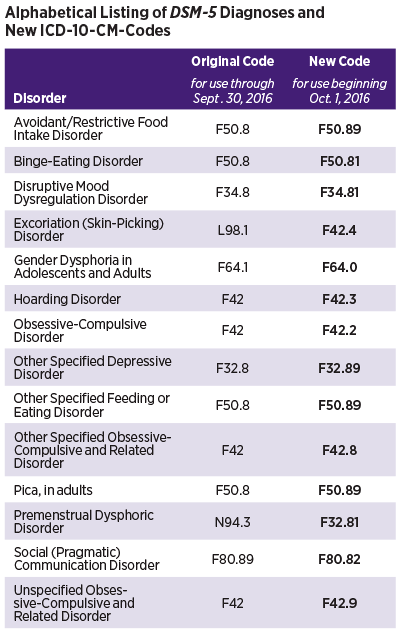Are You Using Updated ICD/DSM Codes That Became Effective October 1?
Abstract
You are urged to read this article and print out the new codes to ensure that your claims aren’t denied.
New ICD-10 codes reflecting updated diagnoses in DSM-5 went into effect on October 1. Though APA has been working to get the word out to members and to other organizations, APA has learned that some DSM users are still using the old codes and thus are encountering denied claims.

Each year on October 1, the International Classification of Diseases, Tenth Edition, Clinical Modification (ICD-10), is updated to reflect diagnostic changes in medicine. Since 2010, no major updates were permitted. This “freeze” on updates was implemented so that physician practices, facilities, and payers in the United States could update their systems during the transition from ICD-9 to ICD-10, which went into effect on October 1, 2015.
Changes have now been made to ICD-10 to reflect the updated diagnoses in DSM-5, which was released in 2013. These include changes to align the terminology used in DSM-5 with that used in ICD-10.
In some cases, new codes have been added to ICD-10 to accommodate the new diagnoses that were added to DSM-5. The new codes will allow more accurate diagnostic recording, improved communication among clinicians, and better means for collecting prevalence data.
As of October 1, the codes for the DSM-5 disorders listed in the chart at right were no longer valid. The new codes in the chart must be used in their place.
A printable version of the list can be accessed here and includes the diagnoses in both alphabetical order and the order in which they appear in the DSM-5 classification. ■



